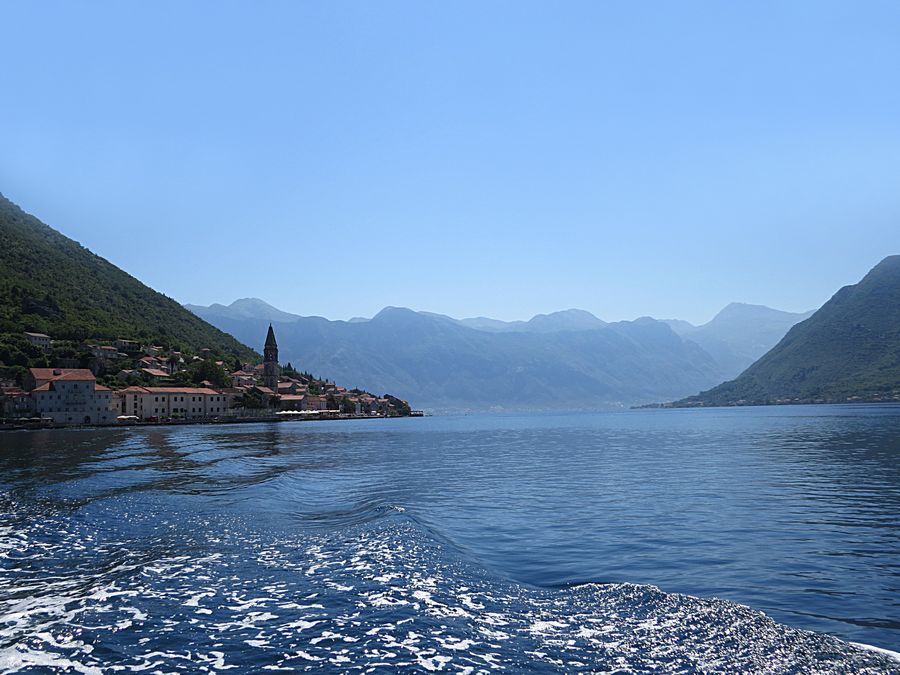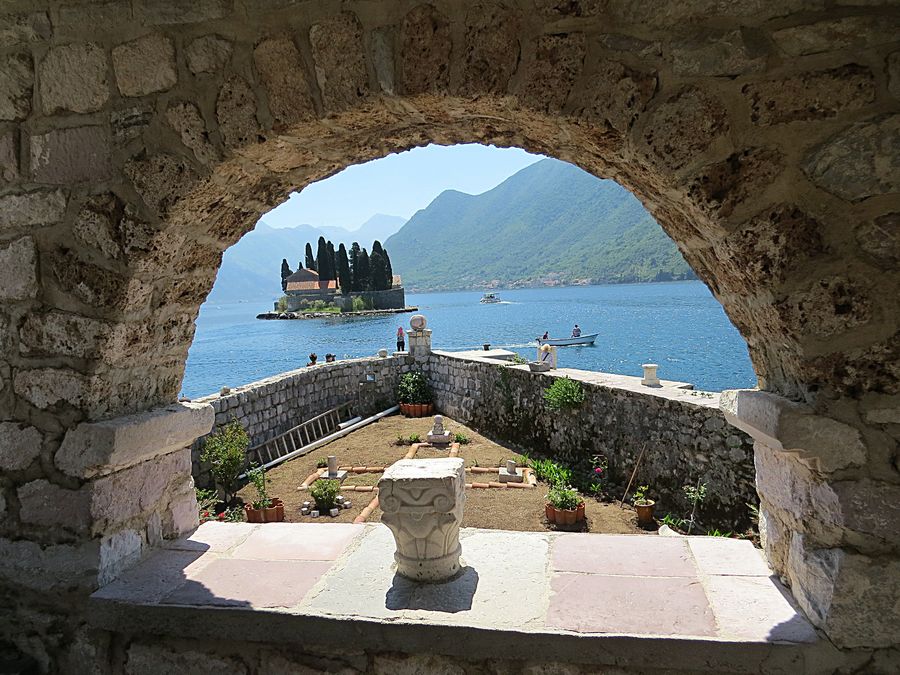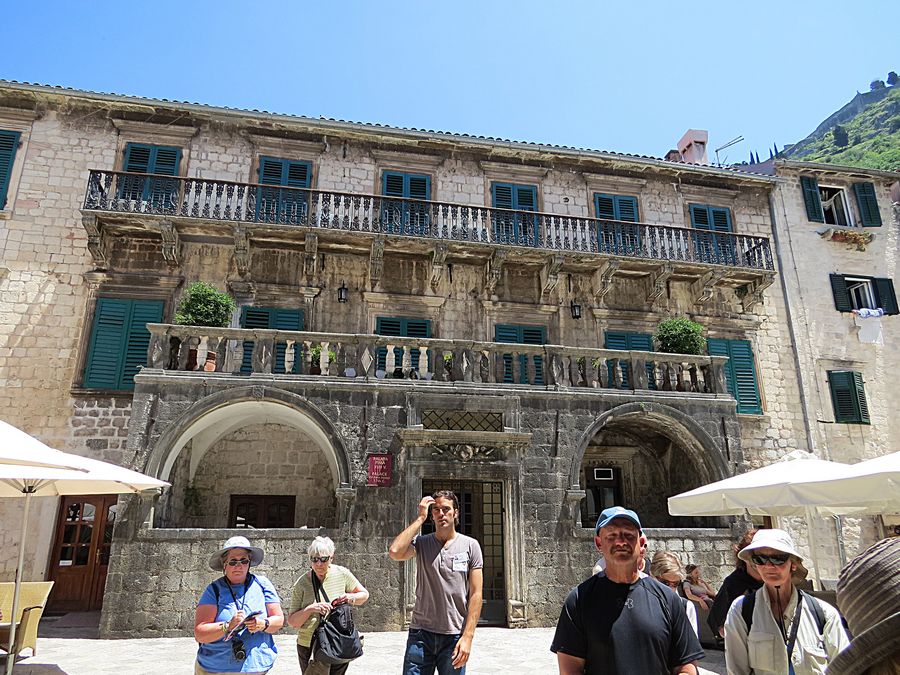Crossroads of the Adriatic Tour
Albania, Croatia, Montenegro, Bosnia and Herzegovina, and Slovenia
May 23 - June 12, 2015
Part Three - Montenegro
Montenegro is in Southeastern Europe, with a small coast on the Adriatic Sea to the southwest and is bordered by Croatia to the west,
Bosnia & Herzegovina to the northwest, Serbia to the northeast, and Albania to the southeast. It is a candidate for joining the European Union & NATO.
After the dissolution of the communist state of Yugoslavia, it remained part of a smaller Federal Republic of Yugoslavia along with Serbia.
In a referendum on remaining in Yugoslavia in 1992, 96% of the votes cast were in favor of a federation with Serbia. The referendum
was boycotted by the Muslim, Albanian, and Catholic minorities. During the 1991–1995 war, Montenegrin police and
military forces joined Serbian troops in the attacks on Dubrovnik. These operations, aimed at acquiring more territory,
were characterized by a consistent pattern of large-scale violations of human rights. Bosnian refugees were arrested by Montenegrin police
and transported to Serb camps where they were subjected to systematic torture and executed. In 1996, the
Montenegrin government severed ties between Montenegro and the Serbian regime, which was then under Slobodan Milosevic.
In 2002, Serbia and Montenegro came to a new agreement regarding continued cooperation and entered into negotiations
regarding the future status of the Federal Republic of Yugoslavia.. In 2003, the Yugoslav federation was replaced
in favor of a more decentralized state union. The status of the union between Montenegro and Serbia
was decided by a referendum in May 2006 when a little over 55% of those voting voted for independence. Serbia and the EU
and the UN Security Council all decided to recognize Montenegro’s independence.
The country is about the size of Connecticut. About 74% of the population is Orthodox Christian, about 18% Muslim, and 4% Catholic.
Page Six - Kotor, Montenegro

Old Town Dubrovnik taken from our bus on our way to Kotor,
Montenegro

Looking back at Perast and Bay of Kotor
Perast, Montenegro is an ancient village along the Bay of Kotor that
has Venetian architecture and stone churches. From Perast, we boarded
a small boat
to go to the islet of Our Lady of the Rocks and to Kotor.

Nearing Our Lady of the Rocks with Perast to the left.
The town of Kotor is straight ahead and beyond.

Our Lady of the Rocks is an islet off the coast of Perast in the Bay of Kotor,
Montenegro. It is an artificial island created by a bulwark of rocks and by sinking
old and seized ships loaded with rocks. The Roman Catholic Church of Our Lady
of the Rocks is on the islet and has a museum attached. This church was built in
1632. According to legend, the islet was made over the centuries by local seamen
who kept an ancient oath after finding the icon of Madonna and Child on the rock
in the sea on July 22, 1452. Upon returning from each successful voyage,
they laid a rock in the Bay. Over time, the islet gradually emerged from the sea.

View of Saint George Island, a natural island, from Our Lady of the Rocks. The
island contains Saint George Benedictine monastery from the 12th century
and the old graveyard for the old nobility from Perast
and from the whole Bay of Kotor.

In old town section of Kotor
It was part of the Venetian Republic from 1420 to 1797. It was besieged by
the Ottomans in 1538 and 1657. Four centuries of Venetian domination have
given the city the typical Venetian architecture, that contributed to make
Kotor
a UNESCO world heritage site.

Pima Palace, a 17th century palace in Kotor.
Our local Montenegrin guide is in the center along with some of our group.

The Cathedral of Saint Tryphon, a Roman Catholic cathedral, is the largest
and most beautiful building in Kotor, and was consecrated on June 19, 1166.
The cathedral was seriously damaged and rebuilt after the earthquake of
1667, but there were not enough funds for its complete reconstruction.
That is the reason why its two towers are so different one from the other.
Another massive earthquake in April 1979, which completely devastated
the Montenegro coast, also greatly damaged the cathedral. Luckily, it
has been salvaged.

View of the Cathedral and a limestone cliff above Kotor

Church of Our Lady of Remedy, built in the early 16th century. Perched
on a mountain slope above Kotor and the Bay, it has great views of Kotor
and the Bay.

A child eating lunch in Kotor

The national flag of Montenegro

Kotor is a coastal town in Montenegro, located in a secluded part of the
Bay of Kotor. This old Mediterranean port is surrounded by fortifications
built during the Venetian period. Above the city are limestone cliffs.
The town has seen a steady increase in tourists, many coming by cruise
ship. It is a World Heritage site.

Rock steps and a cobbled path lead from the town of Kotor
up to the Church of Our Lady of Remedy. You can also
continue from there up more steep steps and trail up
to the fortress overlooking the town for even higher views of the area.
3 of
us from the tour group did that.
There is a need to watch your footing, and the trail would be slippery when wet.

Bay of Kotor

Pat with Bay of Kotor in the background

Above the Church of Our Lady of Remedy
as I continued up to the fortress

Back down in Kotor looking up at the Church
and the fortress on the hillside

We drove back to Dubrovnik from Kotor.
Here is a view of the Dubrovnik area at dusk from our hotel.

Our final night in Dubrovnik we had another glorious sunset.

Link to Page Seven - Pocitelj
and Mostar, Bosnia and Herzegovina
Pat's Home Page